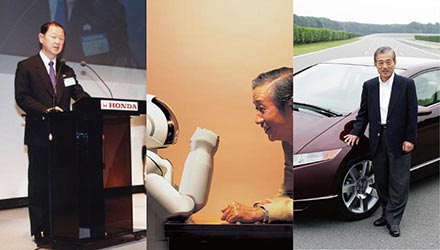A Giant Step Closer to the Dream
After overcoming a number of struggles in the process of concept-making, design, production and testing, in July 2002, the time had finally come to take the HF118 into the skies.
The engine on one side of a Citation Jet, an aircraft that was approximately the same size as the HondaJet POC aircraft, was replaced with the HF118, and flight tests were conducted in North Carolina, U.S.A. The team loaded up the aircraft with measuring equipment and acquired a wide range of data by flying the aircraft in every possible state of motion. Testing proceeded smoothly, and once the reliability was confirmed, both engines were replaced with the HF118, and flight tests continued, including tests to compare performance against the CitationJet with its original engines. For the first time ever, Honda flied an aircraft solely by the power of Honda engines. The results of the comparison of overall fuel consumption for a typical flight pattern under the same conditions were better than expected, and the superiority of the HF118 was verified.
These favorable flight test results led to a decision to equip the HondaJet POC, which was being researched in parallel, with the HF118 and conduct flight tests. In fact, the then Honda president, Hiroyuki Yoshino, requested the team to conduct flight testing of the HondaJet POC before the 100th anniversary of the Wright brothers’ first successful flight at Kitty Hawk, North Carolina, which occurred on December 17, 1903. Approval to conduct the flight testing came just in time, and after considerable hard work, the maiden flight of HondaJet was successfully completed on December 3, 2003, also in North Carolina. This became a significant step forward toward Honda’s dream of commercializing its aircraft engines.
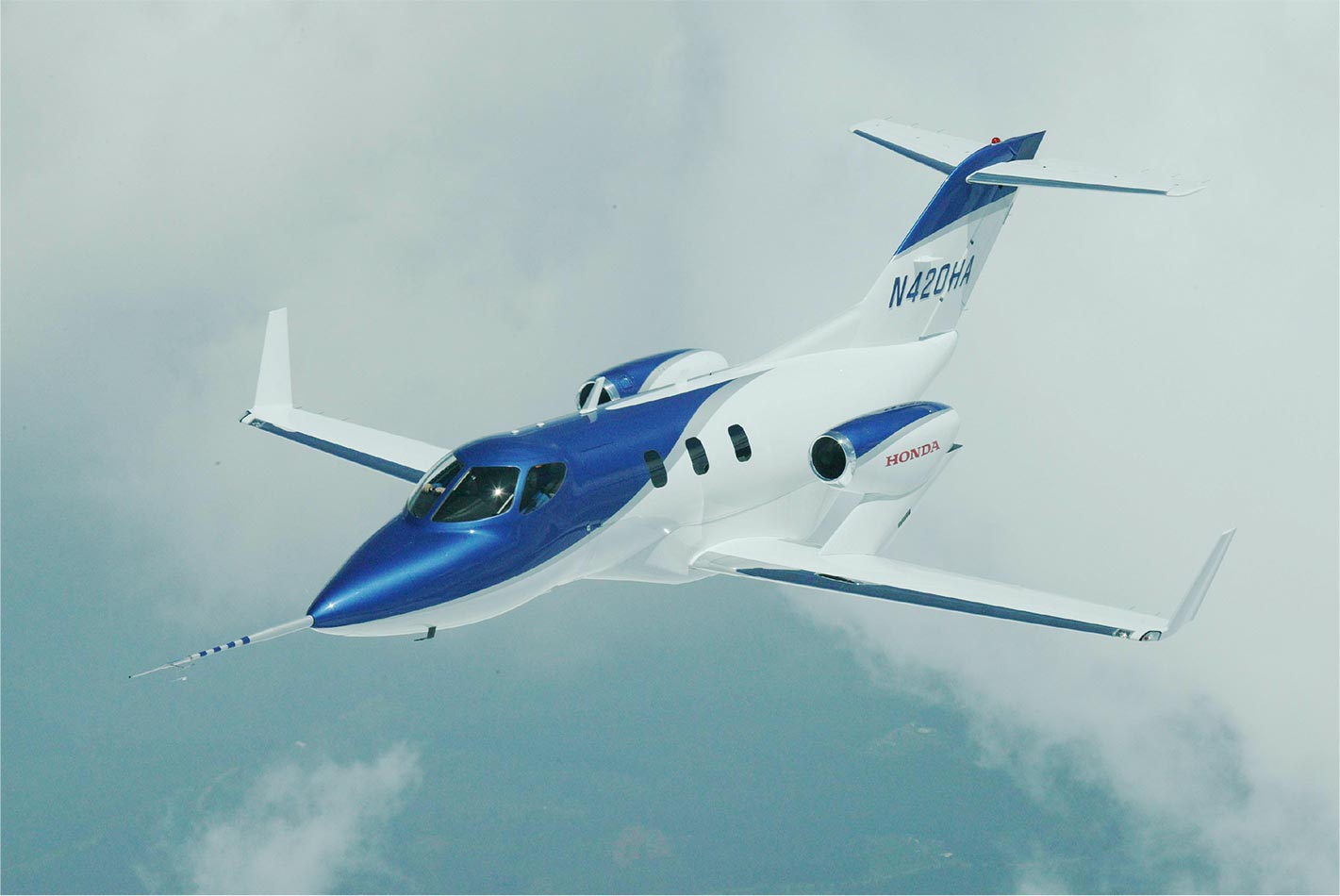
Flight test with HF118 on HondaJet POC aircraft
Type Certification: The Last Major Challenge to Take On
Toward Commercialization
In 2004, Honda established GE Honda Aero Engines, LLC, a 50/50 joint venture with the U.S.-based General Electric Company (GE), for the commercialization of its aircraft engines. This joint venture brought together know-how and technologies of GE, which already had obtained type certification for more than 130 aircraft engines, and Honda technologies for small jet engines to further advance the HF118 and obtain type certification.
Meanwhile, in Japan, Honda established Wako West Research Center (HGN) as a division to specialize in the research and development of aircraft engines, independent of HGF, with the slogan “Be devoted to technology” in pursuit of the dream of commercializing aircraft engines.
Initially, GE Honda Aero Engines planned to mass-produce the HF118-based engine with minimal modifications and without making major changes to the basic design. However, it turned out that such an approach would be insufficient to achieve overwhelming competitiveness, as competitors were also conducting vigorous research and development activities.
Therefore, in 2005, GE Honda Aero Engines began the development of a new engine, codenamed HF120, by incorporating technologies of both GE and Honda into all components. To reduce fuel consumption, both a low-pressure compressor and low-pressure turbine were switched from single-stage to dual-stage. Moreover, the team reviewed the design of each component from the ground up to achieve a 17% increase in thrust and a 3% improvement in fuel economy while maintaining engine weight equivalent to that of HF118.
There were no emissions regulations applicable to HF120 in the small aircraft engine class. However, the team set a goal to meet the regulation standards equivalent to those applicable to large aircraft engines. Furthermore, the target for the overhaul interval was set at 5,000 hours, 40% longer than that of competitors’ small engines and equivalent to that of large engines.
GE not only had extensive experience in obtaining numerous type certifications, but was also familiar with the symptoms and deterioration rate of aircraft engines and their parts in the market. Such information was something that Honda, a newcomer to the market, could never have obtained on its own. Furthermore, GE had an immense statistical database of machining accuracy for various machining methods, backed up by vast amounts of data accumulated throughout their history, and GE also had the know-how to minimize manufacturing problems by adopting designs that allowed tolerances in technical drawings that conformed with Six Sigma (6Σ)*3 standard deviation for machining accuracy.
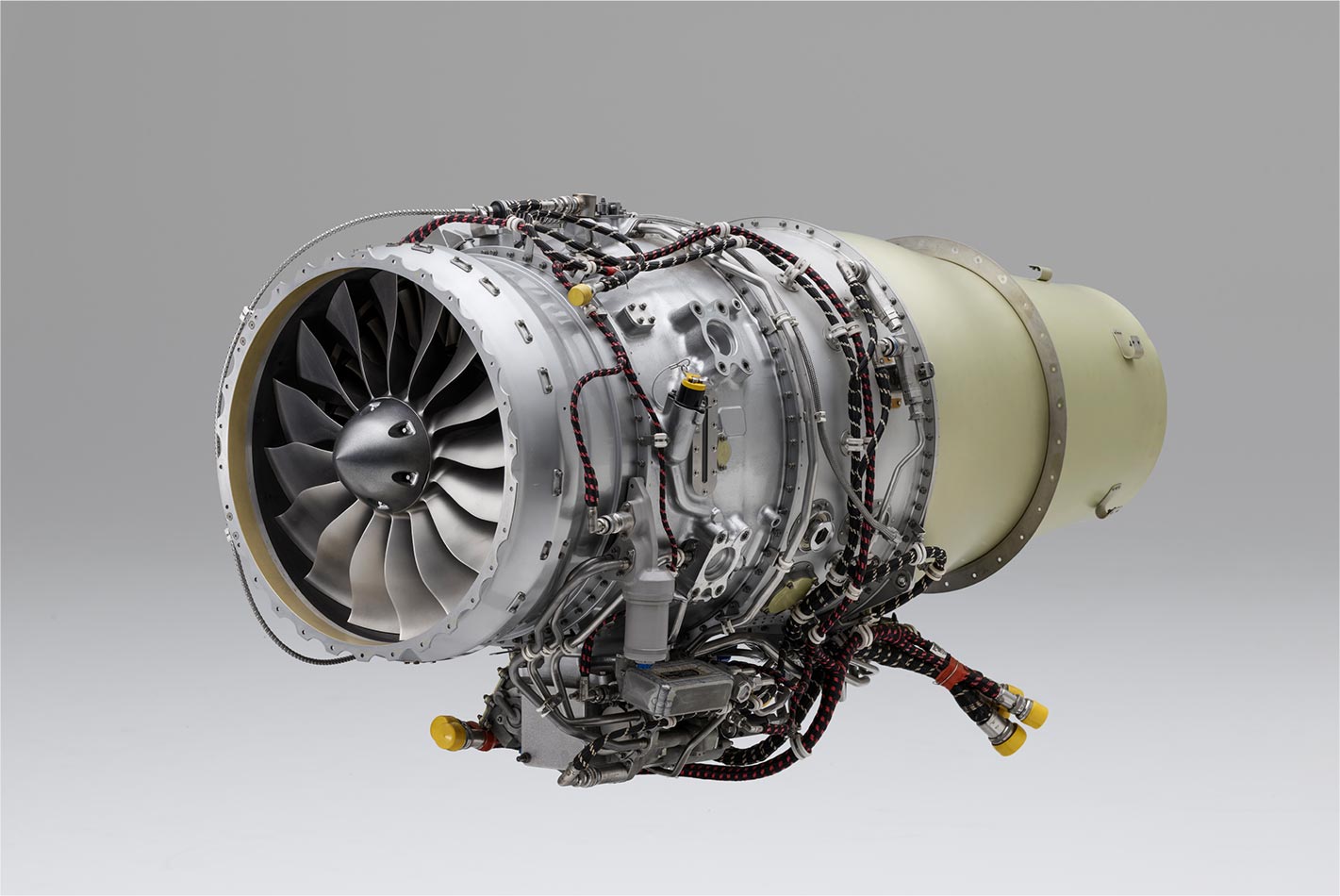
HF120 developed for commercialization
In product development, GE had already established a design system to maintain product safety and performance above a certain level, as well as an evaluation system to assess design outputs. It was critical for Honda to be able to learn such knowledge and know-how of GE.
After verifying the performance of each component in stand-alone testing, in 2007, a demonstrator engine was built for design verification prior to the development of the engine for certification. This demonstrator engine accomplished a splendid feat of achieving its target performance in the first assembly test.
Subsequently, a series of performance and function verification tests were conducted using the same demonstrator engine, including testing for blade and axial vibration of rotating components, cooling of engine parts which get exposed to high-temperature during operation, emissions and control of various components. In March 2009, the fan blade-off (FBO) containment test was also successfully completed.
Later in the same year, an application for type certification was filed with the FAA and the certification process for HF120 started. Based on the demonstrator engine, further improvements were made to the design of each component to develop the engine for certification featuring lighter weight, lower cost and higher reliability. In October 2009, testing began on GE’s high-altitude simulation bench, and all necessary tests for certification were conducted using test benches at six locations in Japan and the U.S.
The most difficult part of the certification testing was passing the bird strike test, where the engine must maintain 75% of its thrust even if a bird is sucked into it, and demonstrate durability to be able to return to an airport. With some difficulty, HF120 had passed all other tests except this one. Considering the amount of time left to obtain type certification, there was little time available to remedy the situation, and failure to pass the bird strike test would result in having to go through the entire certification process again. The team felt like they were standing on the edge of disaster.
Many people may think, “It’s only a bird.” However, as the movie “Sully: Miracle on the Hudson” illustrated, bird strikes can quickly lead to a complete loss of engine function. The relative speed at which a bird strikes the fan at the front of a jet engine is approximately 1,450 km/h, which is faster than the speed of sound and causes massive impact on the fan blades. A collision with a bird could severely deform fan blades made of a titanium alloy, which can significantly reduce the engine’s forward thrust.
Since a redesign of the fan blades of HF120 wasn’t feasible in the time available, the team decided to increase impact resistance by trimming down the tips of the fan blades using a procedure called cropping. However, simply trimming the blade tips would result in reduced thrust, so careful analysis was needed to find a balancing point between maintaining thrust and improving impact resistance. To address this challenge, the team employed a technology to simulate deformation caused by a bird strike. It was a technology another team had diligently pursued while being overshadowed by more prominent development activities for the certification. Moreover, with the full cooperation of Honda R&D, the fan blade deformation analysis was conducted using a cloud computer system for automotive crash testing.

“Never give up.” An illustration of the development
team’s situation.
After three weeks of iterations (or repeated calculations), the team identified design specifications which reduced deformation by one-third and sufficiently satisfied engine performance requirements. Within a week, a new fan for the bird strike test was fabricated, and in another two days HF120 passed the bird strike test. This rapid recovery was a surprise not only to the joint venture partner, GE, but also to FAA staff members. It was a moment where the team’s persistence with the “never give up” spirit paid off.
Ultimately, HF120 underwent nearly 9,000 hours of testing with 14,150 test cycles, and the team submitted 190 certification reports. As a result, on December 13, 2013, the FAA granted type certification to the HF120 engine. This was the first time in 21 years for the FAA to award type certification to an engine developed by a new aircraft engine manufacturer.
- Six Sigma is a product quality management technique, and a Six Sigma level of performance has 3.4 defects per million opportunities (3.4 DPMO). It means achieving an accuracy within 3.4 per million as an error margin.
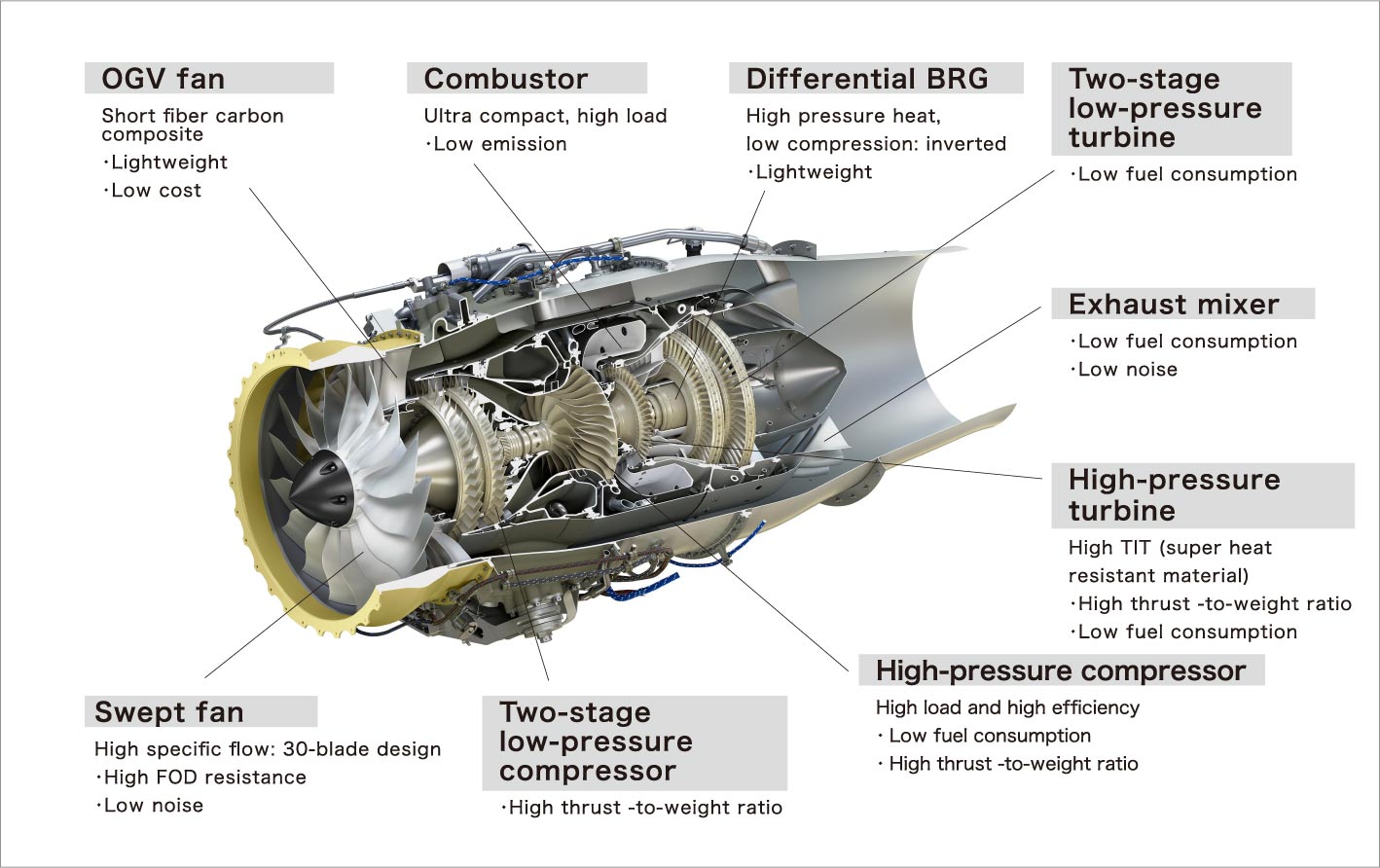
HF120 jointly developed by Honda and GE.
Two More Certifications Needed Before Market Launch
Receiving FAA type certification alone is not enough to begin production of an aircraft engine. It requires three certifications: type, production and repair station.
Assuming everything went well, it was expected that the FAA Production Certificate would be issued in March 2015. At that point, it would be the first time in 23 years FAA would issue a Production Certificate to a new company that would produce jet engines in America. In light of such a long blank period, the FAA revisited and discussed the assessment procedures. As a result of such discussions, the regional FAA operation that oversees Honda Aero, Inc. (HAI) confirmed the basic assessment items, and experts from FAA operations across the U.S. came together to conduct a detailed assessment.
The following four items were confirmed during the assessment of HAI for the Production Certificate:
- 1) Does HAI have a CFR quality system?
- 2) Has HAI established control standards for each manufacturing process?
- 3) Are such standards being implemented in each process while keeping
detailed records? - 4) Do staff members who implement such control standards fully understand them?
HAI carefully prepared for the assessment and received the Production Certification with no delay in March 2015. After undergoing a similar stringent assessment process, HAI also received the Repair Station certification as the official maintenance, repair, and overhaul (MRO) operation for the HF120 engine. HAI became the first aircraft engine factory to obtain both production and repair station certifications for the same engine.
A Dream Come True: Customer Deliveries
In December 2015, the HondaJet equipped with the GE Honda Aero Engines HF120 engine obtained FAA type certification.
Customer deliveries of the HondaJet began, and the Honda dream of taking its mobility into the skies by developing and producing both the jet engine and airframe came true 29 years after the start of fundamental technology research. The HondaJet became the most delivered jet in its category for 2017 and topped the list for five consecutive years through 2021.
In September 2022, cumulative production of the HF120 engine exceeded the 500-unit milestone. The total operating time of the HF120 installed in more than 200 units of HondaJet exceeded 280,000 hours.
Into the Future
Honda’s next dream is to create a next-generation mobility system centered around eVTOL (electric vertical take-off and landing) aircraft, which will feature superior user convenience and quiet operation compared to conventional modes of mobility in the skies.
As the power unit of its eVTOL, Honda is envisioning to adopt a gas turbine hybrid system, which combines a gas turbine generator that offers outstanding endurance and a battery that produces instantaneous power. This power unit is being developed by combining 1) technologies amassed through the development of aircraft engines, including basic combustion and aerodynamic technologies as well as technologies to ensure high reliability, 2) power generation technologies developed for F1TM power units and 3) a hybrid system for automobiles.
The adoption of a gas turbine hybrid system will enable energy management suitable for various flight conditions, which will extend the range compared to all-electric (battery) power units and reduce environmental impact compared to conventional aircraft engines. Honda is conducting research into eVTOL power units by leveraging technologies and experience it has amassed through the certification testing and mass production of the HF120, as well as the collective strengths of Honda with engineers specialized in a wide range of mobility technologies.
Moreover, reducing CO2 emissions is also a critical challenge Honda must take on for its mobility in the skies. Honda will strive to achieve a significant reduction of CO2 emissions by further improving the environmental performance of its gas turbine hybrid systems and by utilizing 100% sustainable aviation fuels (SAF) in the future. While continuing its independent research into SAF, in June 2022, Honda joined the FAA/OEM Review Panel, an international technical review panel which will evaluate the safety of SAF and supports the standardization of SAF. Moreover, Honda will work together with partners all around the world to achieve innovations in the area of mobility in the skies and realize carbon neutrality by working on the development of aircraft, advancement of power unit technologies and research into environmental technologies such as ASF.
The very essence of Honda aircraft engine research and development can be summed up in the two phrases: “Never give up” and “Be devoted to technology.” Striving to realize its goal to achieve carbon neutrality, Honda will continue to create new aircraft power unit technologies for the future.
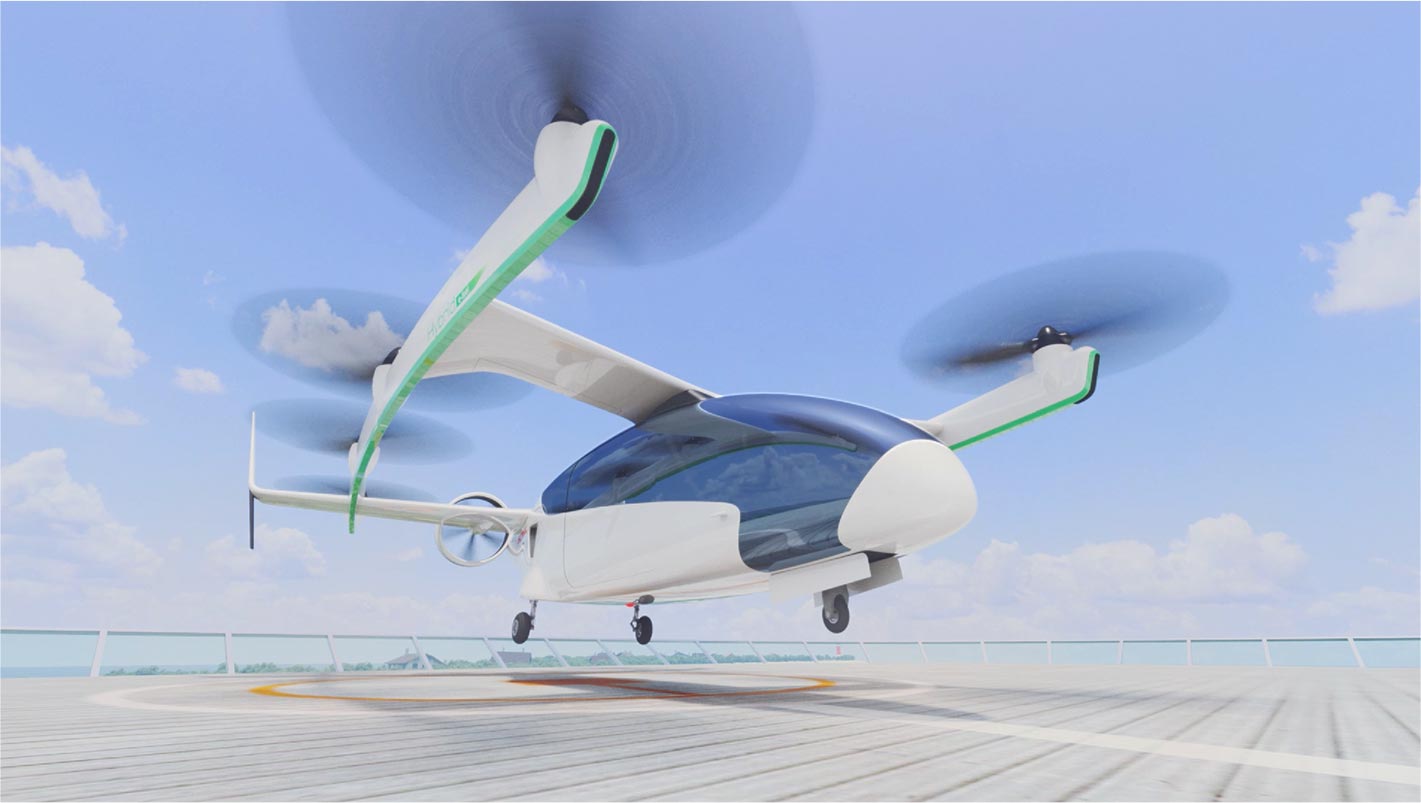
Honda aims to develop new air
mobility based on eVTOL.



